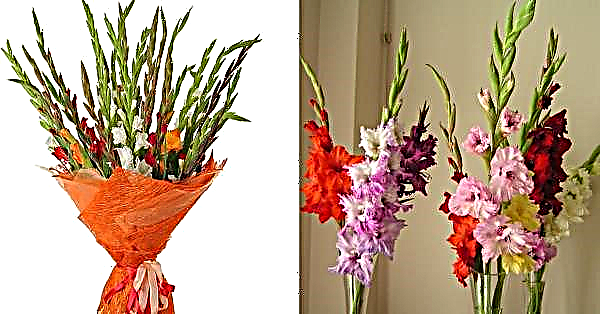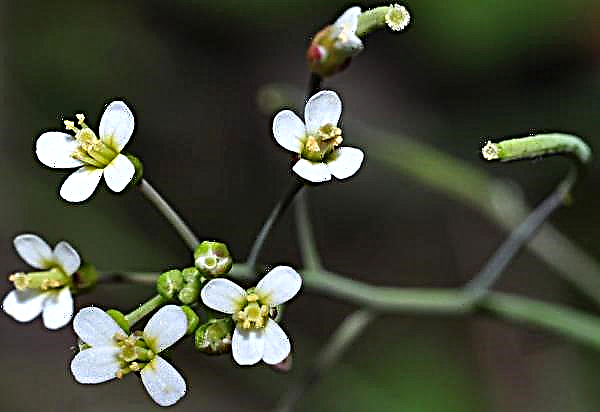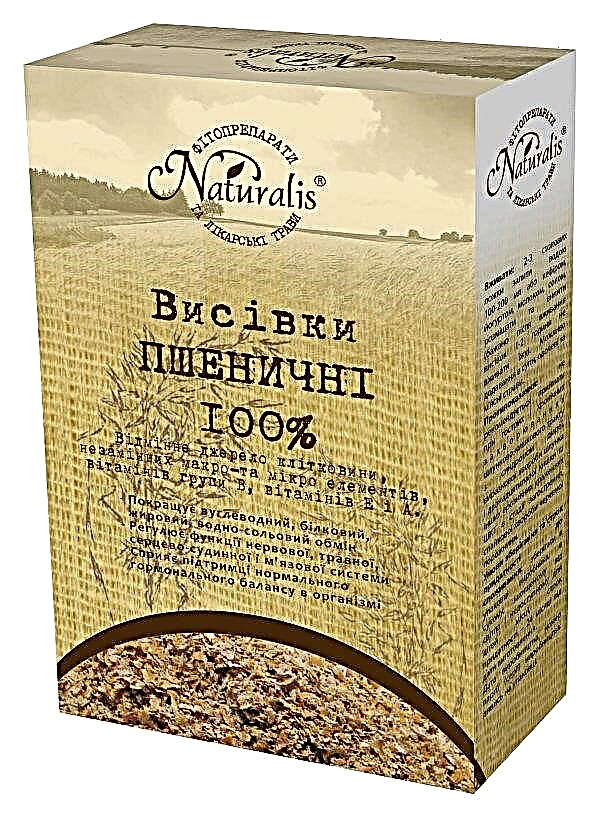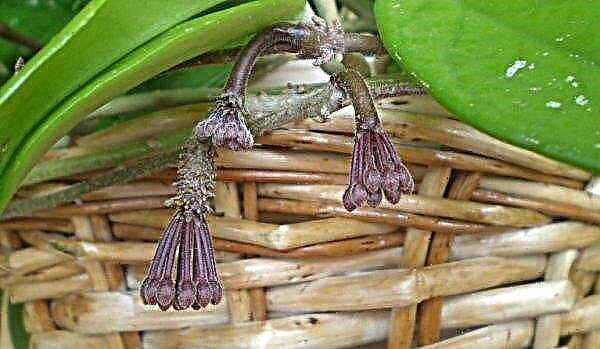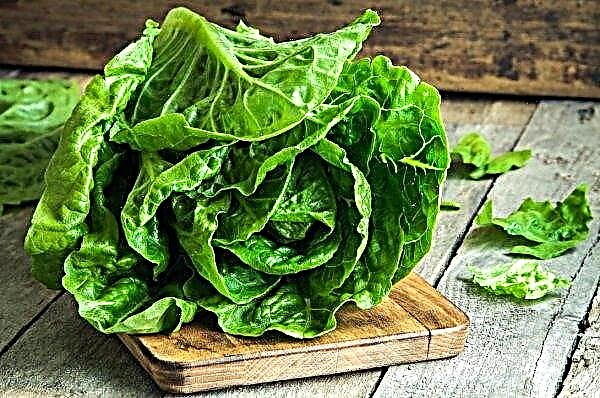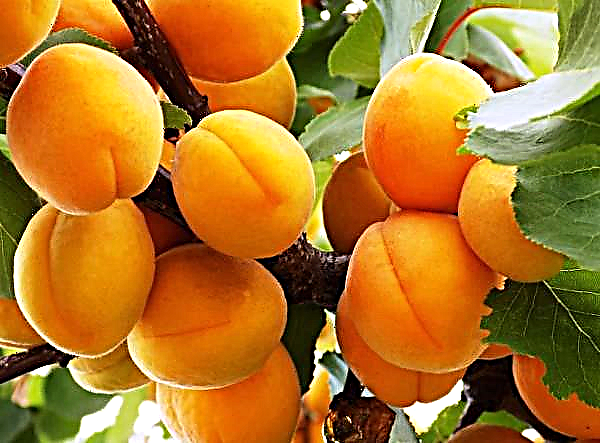If, choosing among houseplants, you prefer flowering varieties, then the Zephyr violet variety is just for you. With proper care, these plants will long delight you with beautiful pink and white flowers, requiring only a little attention in return. What you should know about the nuances of growing this variety, and how best to organize the care of violets - this will be discussed in this article.
Botanical description of the plant
A distinctive characteristic of Zephyr violets is semi-double, large cup-shaped flowers, 4–7 cm in diameter. Fringed white petals are supplemented with soft pink strokes, which increase in size during the growth of the flower. Violet blooms profusely and for a long time, several buds may appear on one peduncle at once. Thanks to this, even a small flower will seem like an elegant miniature bouquet.
Did you know? Today, people around the world grow about 500 species of violets, and the highest concentration of these flowers is concentrated in North America, Japan and the Andes.
The external features of the variety include:
- wavy, light green leaves;
- strong, standing peduncles;
- a large but flat outlet with a slight pubescence in the lower row;
- large bright flowers with corrugated petals.
Conditions for successful growing at home
Before buying a violet, take care of creating suitable growing conditions for it, which include the selection of lighting, temperature and humidity in the room. It will not work to adjust the plant to environmental conditions, and in the absence of the necessary indicators, the flower will not take root.
Accommodation
In terms of placing a flower pot, the Zephyr variety does not differ in special requirements, therefore, like other types of violets, it is desirable to place it in a room with bright but diffused light. If this is not possible, you will have to shade the plant in the afternoon, when the sun's rays are most active. An ideal solution would be a windowsill in the eastern or western part of the home. Growing on the north side is fraught with the formation of small and pale flowers, as well as a weak rosette, which negatively affects the overall decorativeness of the plant.
Important! During the growing season of the Zephyr variety, the daylight hours should be at least 16 hours a day. Therefore, in the absence of a sufficient amount of solar radiation, the plant will have to be illuminated artificially.
Temperature and humidity
Marshmallows are thermophilic, like other violets. In the spring-summer period, the temperature should be kept within + 20 ... + 25 ° C, and in winter not fall below + 16 ° C. Lowering the temperature in the cold season is a prerequisite for the plant to relax before starting a new flowering. The humidity in the room should not exceed 60%, otherwise the plant outlet may rot. It is better that the air in the room is slightly dry, then it will be possible to increase humidity to an acceptable norm by placing containers with clean water next to the plant. In the hot summer months, it is allowed to ventilate the premises or periodically remove the pots to the balcony, but subject to the absence of drafts. It is impossible to spray the flowers, as well as to allow the average daily temperature fluctuation by more than 2-3 ° C. This inhibits the growth of the flower and leads to shredding of flowers.
In the hot summer months, it is allowed to ventilate the premises or periodically remove the pots to the balcony, but subject to the absence of drafts. It is impossible to spray the flowers, as well as to allow the average daily temperature fluctuation by more than 2-3 ° C. This inhibits the growth of the flower and leads to shredding of flowers.
Home Care
Care for violet Zephyr provides for watering and dressing, pruning and transplanting plants, and in all cases it is necessary to adhere to the existing rules of the procedure.
Watering
The amount of watering when caring for violet Zephyr is regulated based on the humidity in the room and the drying rate of the top layer of the substrate. In summer, you have to moisten the soil at least twice a week, and in winter, when the plant is at rest, you can water it about two times a month, as the top soil layer dries. Only irrigation water with a temperature of + 18 ... + 26 ° C is suitable for irrigation. If possible, it is better to filter it. As for the irrigation method, only the bottom one will be acceptable, with the removal of excess fluid from the pan after half an hour.
Important! Before watering the violets, it is useful to loosen the soil a little, giving the roots access to air.
Top dressing
The fertilizer for the Zephyr variety will be the same nutritional formulations that are used to feed other varieties of flowering plants (for example, “Gilea”, “Mr. Color”, “Fasko”). For young flowers, they must contain nitrogen, and with age, violets will have to buy varieties with a high dosage of potassium and phosphorus. Nitrogen-containing mixtures are not suitable for flowering plants, since flowering may stop due to this element, and decorative effect will decrease. During active growth and development, the Zephyr violet is fertilized once every 2 weeks, and during winter dormancy, the number of top dressings is reduced to 1 time in 2 months. With natural lighting of the plantings, the fertilizer of flowers can be started in March and finished in September, applying nutrient formulations both through the pallet (together with warm water) and through the usual top watering, the main thing is that the mixture does not fall on leaves or other parts of the plant.
During active growth and development, the Zephyr violet is fertilized once every 2 weeks, and during winter dormancy, the number of top dressings is reduced to 1 time in 2 months. With natural lighting of the plantings, the fertilizer of flowers can be started in March and finished in September, applying nutrient formulations both through the pallet (together with warm water) and through the usual top watering, the main thing is that the mixture does not fall on leaves or other parts of the plant.
Pruning
Pruning plants of the Zephyr cultivar is based on the same principles as in other cases, so the gardener only needs to regularly remove faded buds, yellowed or twisted leaves. It is desirable to cut the rosette of leaves so that under the lower leaves there is still a small stump (“leg”), then it can be rooted, thereby updating the plant. For uniform flower development, even after pruning, regularly turn the pot so that it is illuminated by the sun's rays from all sides.
Did you know? The peoples of many countries have honored violets since ancient times, attributing magical properties to it. So, among the ancient Gauls, it was considered a symbol of modesty and innocence, the French associated eternal fidelity with her, and modern Germans even arrange celebrations in her honor: traditionally, the first Sunday of March in Germany is considered the day of violets.
Transfer
Violet transplantation is a vital process for the plant, since the nutritional properties of the soil and the size of the pot itself, along with the growth of the flower, change. In order not to be mistaken in the accuracy of determining the transplant time, you need to know about the possible signs of the need for this process.
The list of “signal” factors includes:
- The appearance of white plaque on the surface of the soil, which indicates an excessive amount of fertilizer applied and the lack of proper air permeability of the substrate.
- Dense entanglement of an earthen coma by the root system of the flower, sometimes with roots exiting through drainage holes.
- The general depressed and lifeless form of violet, expressed in the dimming of the color of the foliage (especially if top dressing does not bring the proper result).
 The regularity of the procedure for the described variety is about once a year, preferably in the early spring, before flowering begins. In the case of cultivation using artificial light sources, transplanting violet Zephyr can be performed at other times, with the exception of active flowering. In addition, the abundant appearance of buds indicates that the plant is comfortable in the existing conditions, and it does not need to change the place.
The regularity of the procedure for the described variety is about once a year, preferably in the early spring, before flowering begins. In the case of cultivation using artificial light sources, transplanting violet Zephyr can be performed at other times, with the exception of active flowering. In addition, the abundant appearance of buds indicates that the plant is comfortable in the existing conditions, and it does not need to change the place.For planting violets, you can use any planting containers, but do not forget that in ceramic pots the water will evaporate faster and the plant will have to be watered more often. As for the size of the product, the diameter of the new container should be three times less than the diameter of the flower outlet, which will provide the optimal amount of nutrient mixture for further flowering of violets. In addition, in large pots, the probability of moisture stagnation is higher, which will have a detrimental effect on the root system of the plant.
The transplant process takes place according to the following plan:
- Place a drainage layer of expanded clay, perlite or moss at the bottom of the selected pot (not more than 1/5 of the total volume of the product).
- Pour on top a small amount of a nutritious, but at the same time loose substrate (for example, a mixture of leaf soil, peat and river sand, in a ratio of 4: 1: 1, with the addition of crushed charcoal or sphagnum). The acidity of the finished soil should not exceed 5.5-6.5 units.
- Remove the plant from the pot, remove from it old, rotten roots, yellowed leaves, shake off the remaining soil.
- Treat the places of cuts with powdered charcoal (can be activated) and, placing the plant in the center of the new pot, straighten the roots.
- Pour the violet with the remaining soil mixture to the level of the lower leaves, and pour water in a day and add soil if necessary.
Video: violet transplant
Breeding
As in the case with other violets, it is advisable to propagate the Zephyr variety by cuttings. Rooting leafy cuttings is much faster than germinating seeds, which means that very soon you will have a new flowering plant.
The process of propagation by cuttings is performed according to this scheme:
- Choose a healthy adult mother plant and cut a leaf from it (preferably from the bottom row).
- Having departed from a 3 cm sheet plate, make an oblique cut.
- Immerse the stalk in the soil mixture or in water for rooting, and take the container with planting material in a warm and well-lit place, only without direct exposure to the sun.
- Cover the stalk with foil and ventilate regularly for the next 2–3 weeks (this is how long the rooting will last).
- After the appearance of a sufficient number of roots, prepare a permanent pot, put a drainage layer in it and, after filling the soil mixture, plant a young plant.
When transplanting cuttings from water, all actions must be performed very carefully, since their roots are more fragile than those of specimens extracted from the soil substrate. If the transplanted young plants are very weak, and there is a likelihood of a stem breaking, you can support them with a support, giving additional stability.
Video: Violet propagation by cuttings
Propagation by seeds is a time-consuming process that involves pre-mixing the seed with crushed charcoal (after joint vigorous shaking, the seeds are not only separated from each other, but also disinfected in coal dust).
Prepared seeds are laid on the surface of a moistened substrate and covered with glass, placed in a warm place for germination. At a temperature not lower than + 20 ° C, the appearance of the first seedlings will take at least 20–25 days. When caring for seedlings, moisten the soil with a syringe or pipette and regularly raise the glass for ventilation.
Important! When buying seeds, pay attention to the expiration date, because expired seeds are unlikely to give good shoots.
Possible growing difficulties
With properly organized care for the Zephyr violet, there should not be any difficulties with its cultivation, however, you should never exclude the possibility of some kind of ailment or pest invasion.
The most common problems include:
- The appearance of powdery mildew - a disease of fungal origin. It is characterized by the accumulation of white plaque on the leaves, resembling dust (difficult to erase). The reason is the combination of low temperature and high humidity in the room with a violet. To eliminate the use of fungicidal drugs ("Topaz", "Saprol").
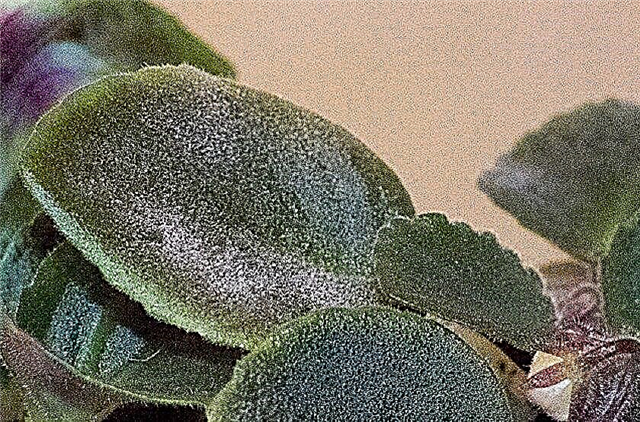
- Fusarium development - a disease that manifests itself in the form of dark spots on the petioles of the plant, which eventually provoke decay and falling of leaf plates. To save the violet, the affected parts must be removed at the first symptoms, and the remaining plant should be treated with a weak solution of potassium permanganate.
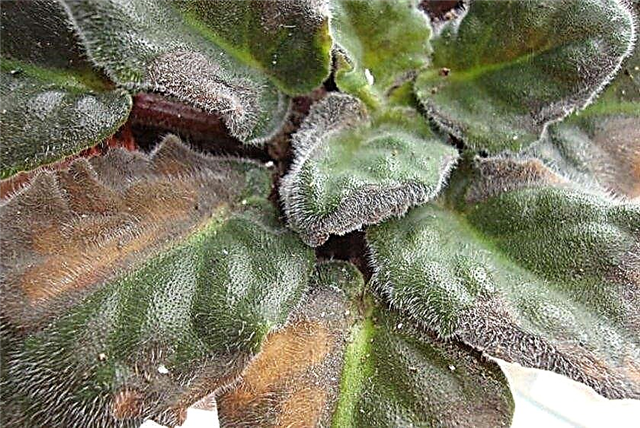
- Gray rot - A disease of fungal origin, the development of which can be explained by the ingress of water on the leaves and flower petals. It manifests itself in a fluffy gray coating, which leads to decay and the death of violets. In the fight against it, fungicidal preparations (“Fundazole”) are used, and in especially difficult cases the plant is transplanted into another pot.
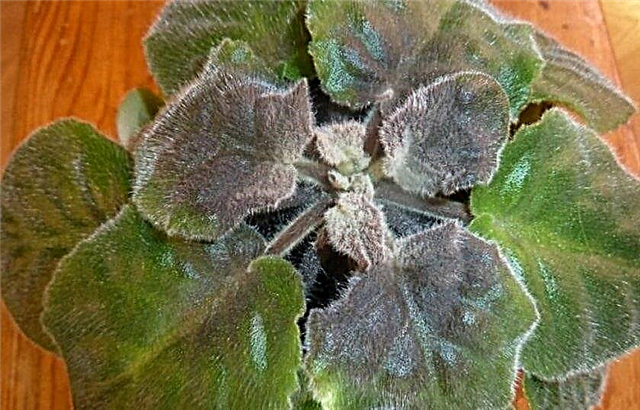
Of the pests, the Zephyr violet is threatened by various types of ticks, thrips, nematodes, aphids and wood lice, which can cause deformation of leaf plates, the appearance of spots and shapeless holes on the leaves and stunting of the plant. To control pests, systemic action insecticides are used ("Aktara", "Calypso", "Krutzer"). Heavily damaged parts of the plant will have to be removed.
The growing conditions and the particularities of caring for the Zephyr violet do not differ much from the requirements for the cultivation of other varieties, so both experienced and beginner growers can cope with the task. Attention to these delicate and beautiful flowers will be fully rewarded with long and abundant flowering.




